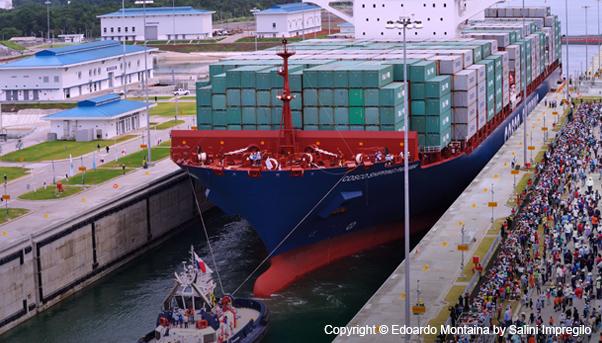Transforming a tiny country of four million inhabitants into a pole of global trade is a challenge that Panama’s canal has succeeded in doing by opening a passage between the Atlantic and the Pacific Oceans. Not only is it a privileged passage for maritime trade but also a monument to visionary engineering genius that has come to attract millions of visitors over the years.
Public interest in this infrastructure began with the inauguration of the first canal in 1914 and continued to June 26 of this year with the opening of the second one, built by Grupo Unidos por el Canal (GUPC), a consortium led by Salini Impregilo.
The massive project, which cost more than $5 billion to build, was officially opened with the passage of a 300-metre-long cargo ship, renamed COSCO Shipping Panama for the occasion. In addition to Panamanian President Juan Carlos Varela and other heads of state and foreign dignitaries, the inauguration of the new canal was attended by many thousands of people – Panamanians and tourists alike.
The expansion allows for the passage of post-Panamax ships, these giants of the sea capable of carrying about 14,000 containers and as a result helps double the income that the canal generates from $2.5 billion to $5 billion in the coming years. It is a forecast that appears achievable in light of the news that 166 big ships (the toll for each one can reach up to $1 million) have already reserved passage through the new canal by December. All of this is thanks to the exceptional work and engineering excellence of Salini Impregilo, which created a system that allows for the recycling of about 60% of the water used in opening and closing of the sluice gates in the locks.

The Canal: Tourism and Development
So the new canal matches the level of fascination of the old one, confirming its attraction for economic and other reasons. Ever since the old canal opened, it has been a landmark able to attract the curiosity of many, from adventurers to tourists. On Aug. 14, 1928, American Richard Halliburton swam it. He had himself registered by the Panama governor as a ship called the SS Halliburton. He also paid the $0.36 toll.
In subsequent years, the canal became a popular tourist attraction, an obligatory stop for those who pass through the country.
Panama’s tourist authorities estimate that tourism brought $5.3 billion in revenue to the country in 2015. In the same year, 2.5 million tourists came to the country, 10.8% more than the previous year. It is a trend that reflects the average of the past 10 years during which the sector has grown at an exponential rate. Even in this year, it is expected to rise 11%.
To foreigners who come to Panama, a visit to the canal is a highlight of their visit to the country. In 2014, the centennial anniversary of the first canal, officials registered 963,000 visits. Between 2004 and 2010, statistics show that 3.2 million tourists came to witness the workings of the sluice gates of the canal.
These are numbers that seem destined to rise after the Panama canal has become two.


